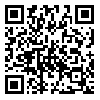Sat, Dec 27, 2025
[Archive]
Volume 14, Issue 4 (December 2018)
IJEEE 2018, 14(4): 392-403 |
Back to browse issues page
Download citation:
BibTeX | RIS | EndNote | Medlars | ProCite | Reference Manager | RefWorks
Send citation to:



BibTeX | RIS | EndNote | Medlars | ProCite | Reference Manager | RefWorks
Send citation to:
Dameshghi A, Refan M H. A New Strategy for Short-Term Power-Curve Prediction of Wind Turbine Based on PSO-LS-WSVM. IJEEE 2018; 14 (4) :392-403
URL: http://ijeee.iust.ac.ir/article-1-1192-en.html
URL: http://ijeee.iust.ac.ir/article-1-1192-en.html
Abstract: (5309 Views)
Wind turbines are very important and strategic instruments in energy markets. Wind power production is unreliable. Wind power is weather dependent and the extreme wind speed changes make difficult to control of grid voltage and reactive power. Based on these reasons, Wind Power Prediction (WPP) is important for real applications. In this paper, a new short-term WPP method based on Support Vector Machine (SVM) is proposed. In contrast to physical approaches based on very complex differential equations, the proposed method is based on data history. Firstly, data preprocessing and normalization is done. Secondly, formulate the prediction as a regression problem. Thirdly, the prediction model is constructed using the Particle Swarm Optimization (PSO) and Least Square Support Vector Machine (LSSVM). In this paper, instead of using the conventional kernels, such as linear kernel, Polynomial and Radial basis function (RBF), the Wavelet (W) transform is used. The PSO-LS-WSVM accuracy has been tested with industrial wind energy data. This method has been compared with other methods and the experimental results based on practical data illustrate that PSO-LS-WSVM proposed method has better responses than other methods. Statistical results indicate that the predicting error of PSO-LS-WSVM is 2.98% for one look-ahead hour.
Type of Study: Research Paper |
Subject:
Renewable Generation
Received: 2017/11/24 | Revised: 2018/12/01 | Accepted: 2018/04/29
Received: 2017/11/24 | Revised: 2018/12/01 | Accepted: 2018/04/29
| Rights and permissions | |
 |
This work is licensed under a Creative Commons Attribution-NonCommercial 4.0 International License. |








